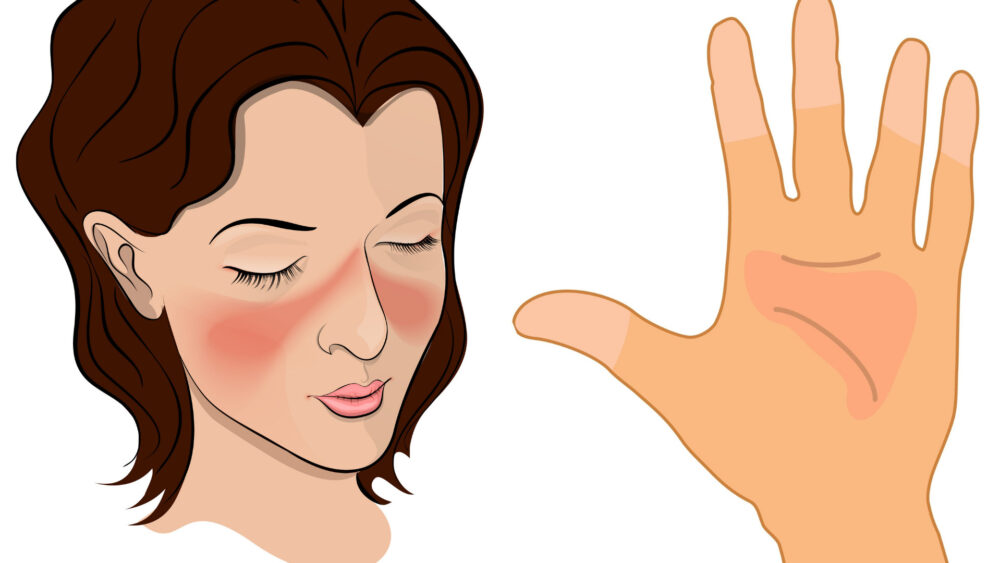Lupus is an autoimmune disease that occurs when your body’s immune system attacks your own tissues and organs. The resulting inflammation can affect many different body parts—including joints, skin, kidneys, blood cells, brain, and the heart and lungs. The Lupus Foundation of America estimates that 1.5 million Americans, and at least five million people worldwide, have the disease.
About nine out of ten adults with lupus are women.
According to MayoClinic.com, certain signs of lupus can be visible on the skin — including the condition’s most telltale sign.
Butterfly rash
Considered to be the most distinctive sign of lupus, a butterfly rash is a facial rash that resembles the wings of a butterfly unfolding across both cheeks. It occurs in many, but not all, cases of lupus, and often appears after a lupus patient is exposed to sunlight.
Discoloration in fingers or toes
Seen in about one-third of lupus patients, Raynaud’s Disease is a condition of the cardiovascular system in which the blood vessels contract, restricting the flow of blood, usually in the hands, feet or both.
Often, in those who suffer from lupus, Raynaud’s is triggered by stress or cold temperatures, which can cause the tips of the fingers or toes to turn red, blue, white, or purple. This may be accompanied by pain, numbness, or tingling.
Nail changes
Also sometimes occurring with lupus-related Raynaud’s disease are changes in the nails. The nails become brittle with longitudinal ridges. According to Lupus UK, other nail changes that can occur with lupus include nail discoloration, loose nails, and spoon-shaped nails.
Bald patches from hair loss
According to Lupus.org, people with lupus can develop rashes or sores on the scalp, which can cause hair loss. MayoClinic.org adds that widespread inflammation can gradually thin a head of hair. Loss of eyebrow, eyelash, beard and body hair is also possible.
For more information on lupus, including symptoms, diagnosis, and treatment, visit www.MayoClinic.org.



